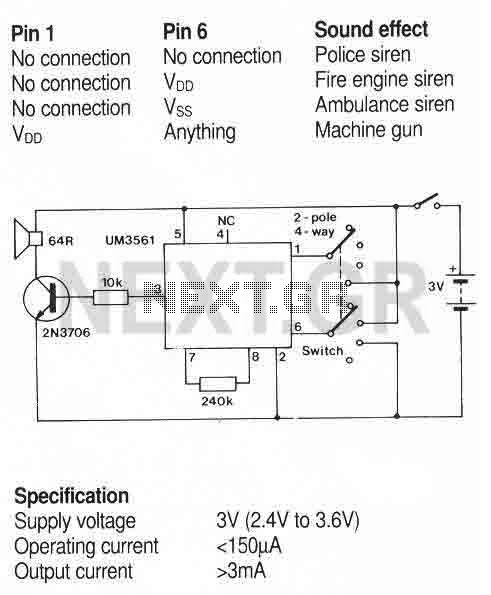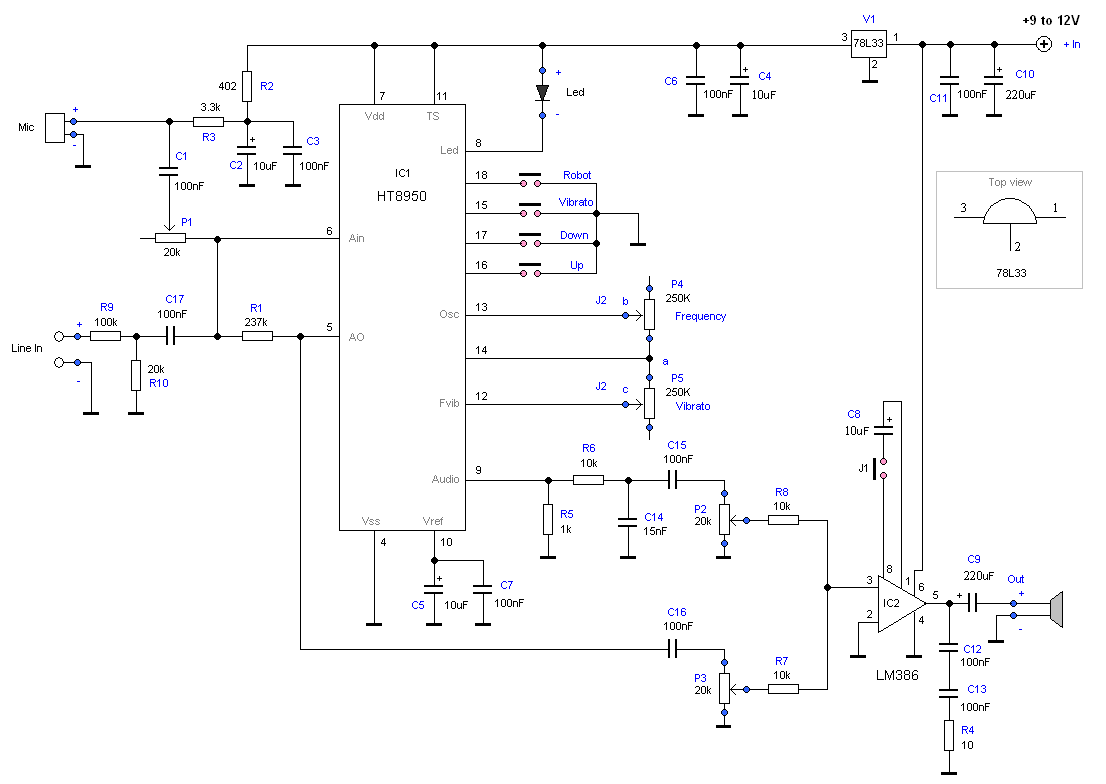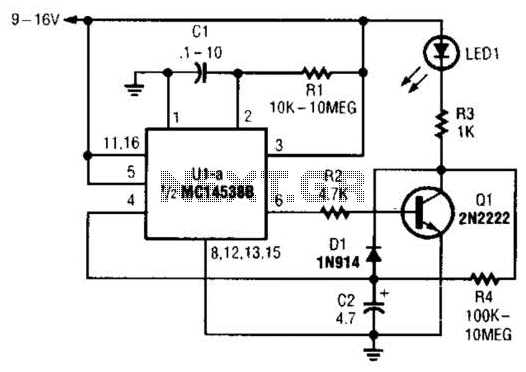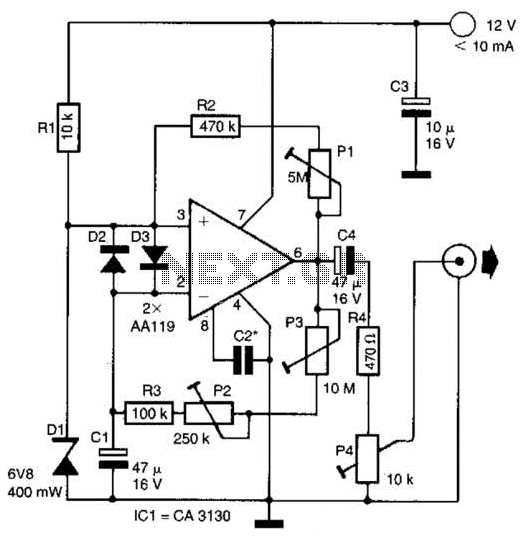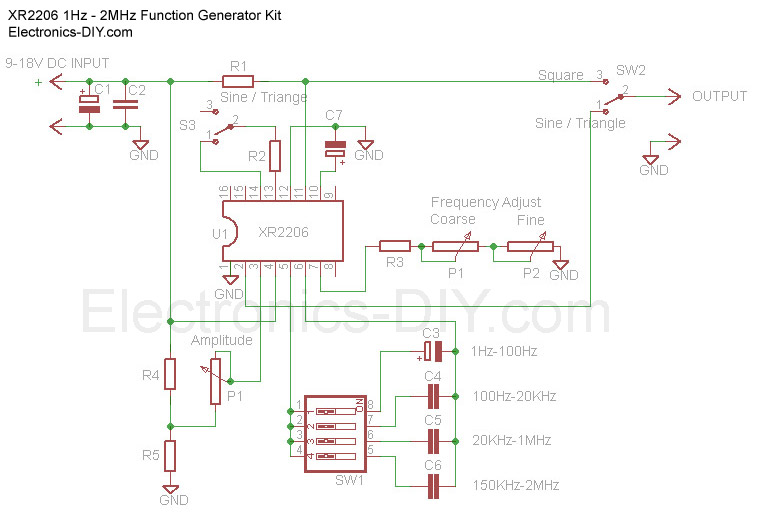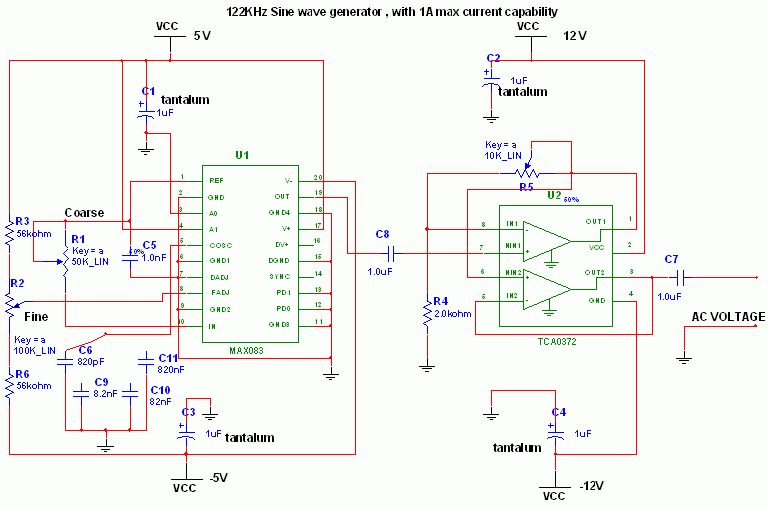
1Khz Square-Wave Generator
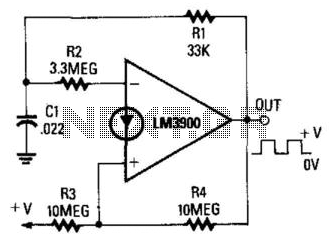
When the output is high, R3 and R4 are in parallel, and C1 charges through R1 until the current in R2 equals that at the non-inverting terminal. This action occurs when C1's voltage rises to 2/3 of the supply voltage. At that point, the circuit switches regeneratively. The output switches low, and C1 starts to discharge through R1. Now, R4 is effectively disabled, and the current to the non-inverting terminal is determined solely by R3, so C1 discharges until the current through R2 falls slightly below that of R3. This happens when the voltage across C1 falls to about 1/3 of the supply voltage. At that point, the circuit again switches regeneratively, and the output goes high again. This circuit is useful for generating symmetrical square waves with maximum frequencies of only a few kHz. Due to the poor slew-rate characteristics of the LM3900 (0.5 V/μs), the output waveforms exhibit relatively slow rise and fall times.
This circuit operates as a basic astable multivibrator, utilizing operational amplifiers for generating square wave signals. The configuration involves two resistors, R3 and R4, which are connected in parallel when the output state is high. Capacitor C1 is charged through resistor R1, which sets the time constant for the charging process. As the voltage across C1 reaches 2/3 of the supply voltage, the op-amp switches from a high to a low output state due to the regenerative feedback mechanism inherent in the circuit design.
Once the output transitions low, C1 begins to discharge through R1. During this discharge phase, R4 becomes inactive, and the discharge current is solely governed by R3. The discharge continues until the voltage across C1 drops to approximately 1/3 of the supply voltage, at which point the op-amp transitions back to a high output state, completing one cycle of the square wave.
The frequency of the output square wave is primarily determined by the values of R1, R3, and C1, as well as the supply voltage. The design is particularly suitable for applications requiring low-frequency square wave generation, typically in the range of a few kilohertz. However, the LM3900's limited slew rate of 0.5 V/μs results in slower rise and fall times for the output waveforms, which may restrict its use in high-speed applications. Overall, this circuit provides a straightforward method for generating symmetrical square waves, making it a valuable component in various electronic applications. When the output is high, R3 and R4 are in parallel, and CI charges via Rl until the current in R2 equals that a t the noninverting terminal. This action occurs when CI"s voltage rises to 2/3 of the supply voltage. At that point, the circuit switches regerier-atively. The output switches low and CI starts to discharge via Rl. Now, R4 is effectively disabled and the current to the noninverting terminal is determined solely by R3, so CI discharges until the current through R2 falls slightly below that of R3. This happens when the voltage across CI falls to about 1/3 of the supply voltage. At that point, the circuit again switches regeneratively, and the output again goes high. This circuit is useful for generating symmetrical square waves with maximum frequencies of only a few kHz.
Because of the poor slew-rate characteristics of the LM3900 (0.5 V7/is), the output waveforms have rather slow rise and fall times. 🔗 External reference
This circuit operates as a basic astable multivibrator, utilizing operational amplifiers for generating square wave signals. The configuration involves two resistors, R3 and R4, which are connected in parallel when the output state is high. Capacitor C1 is charged through resistor R1, which sets the time constant for the charging process. As the voltage across C1 reaches 2/3 of the supply voltage, the op-amp switches from a high to a low output state due to the regenerative feedback mechanism inherent in the circuit design.
Once the output transitions low, C1 begins to discharge through R1. During this discharge phase, R4 becomes inactive, and the discharge current is solely governed by R3. The discharge continues until the voltage across C1 drops to approximately 1/3 of the supply voltage, at which point the op-amp transitions back to a high output state, completing one cycle of the square wave.
The frequency of the output square wave is primarily determined by the values of R1, R3, and C1, as well as the supply voltage. The design is particularly suitable for applications requiring low-frequency square wave generation, typically in the range of a few kilohertz. However, the LM3900's limited slew rate of 0.5 V/μs results in slower rise and fall times for the output waveforms, which may restrict its use in high-speed applications. Overall, this circuit provides a straightforward method for generating symmetrical square waves, making it a valuable component in various electronic applications. When the output is high, R3 and R4 are in parallel, and CI charges via Rl until the current in R2 equals that a t the noninverting terminal. This action occurs when CI"s voltage rises to 2/3 of the supply voltage. At that point, the circuit switches regerier-atively. The output switches low and CI starts to discharge via Rl. Now, R4 is effectively disabled and the current to the noninverting terminal is determined solely by R3, so CI discharges until the current through R2 falls slightly below that of R3. This happens when the voltage across CI falls to about 1/3 of the supply voltage. At that point, the circuit again switches regeneratively, and the output again goes high. This circuit is useful for generating symmetrical square waves with maximum frequencies of only a few kHz.
Because of the poor slew-rate characteristics of the LM3900 (0.5 V7/is), the output waveforms have rather slow rise and fall times. 🔗 External reference
